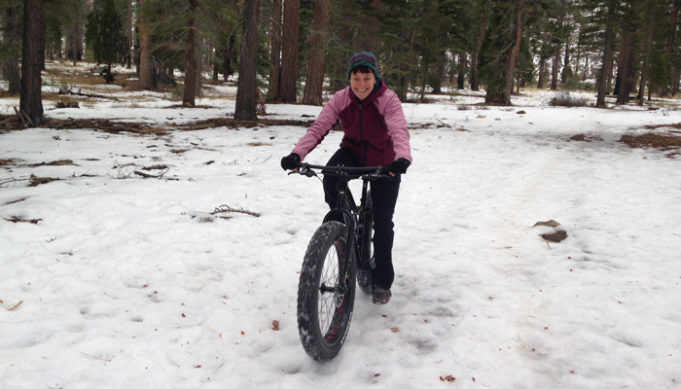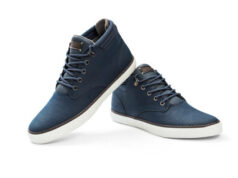Hats for Cyclists
Winter cyclists should make sure their winter hat fits comfortably underneath their helmets. Sometimes this means removing the pads or making other helmet adjustments. A lot of heat escapes through the head, so it’s extremely important to wear a warm hat that also covers the ears. Other options include balaclavas, helmet covers and helmet liners.
Footwear for Cycling
Purchase a good pair of waterproof hiking boots or overbooties for cold riding days. In a pinch, plastic bags over socks and/or shoes will work. It’s not pretty, but it’s dry and practical.
Use Wider Tires
Wide tires work better on snow covered surfaces and studded tires or chains help add traction on the snow and ice. If a cyclist lives in the city, and the roads aren’t covered with snow, narrow tires may still work fine.
Ideally, it’s best to have two bikes because studded wide tires work better in ice and snow, while regular tires work best in wet or milder weather. It’s best to avoid braking on icy patches, so pay attention to dry spots if possible to choose the best place to stop.
Hypothermia Symptoms
Be aware of the symptoms and signs of hypothermia in order to seek treatment before it’s too late. Symptoms of hypothermia include pale skin, drowsiness, weakness, slow breathing and constant shivering. Hypothermia happens when the body’s temperature drops below 35°C (95°F).
Other Winter Bike Riding Tips
– Purchase an insulated water bottle or thermos because ice isn’t going to quench thirst or warm cyclists up.
– Bring along some emergency food and water. Granola bars work well.
– Before heading out, it’s better to be a little cool because riding will warm a cyclist soon enough.
– Pack a lighter in case it’s needed to thaw a lock out.
– Consider grabbing a couple bikes at a garage sale for back up as salt and snow are hard on bikes.
By following these winter cycling tips, people will stay warm, safe and reduce the likelihood of developing hypothermia or frostbite.



















